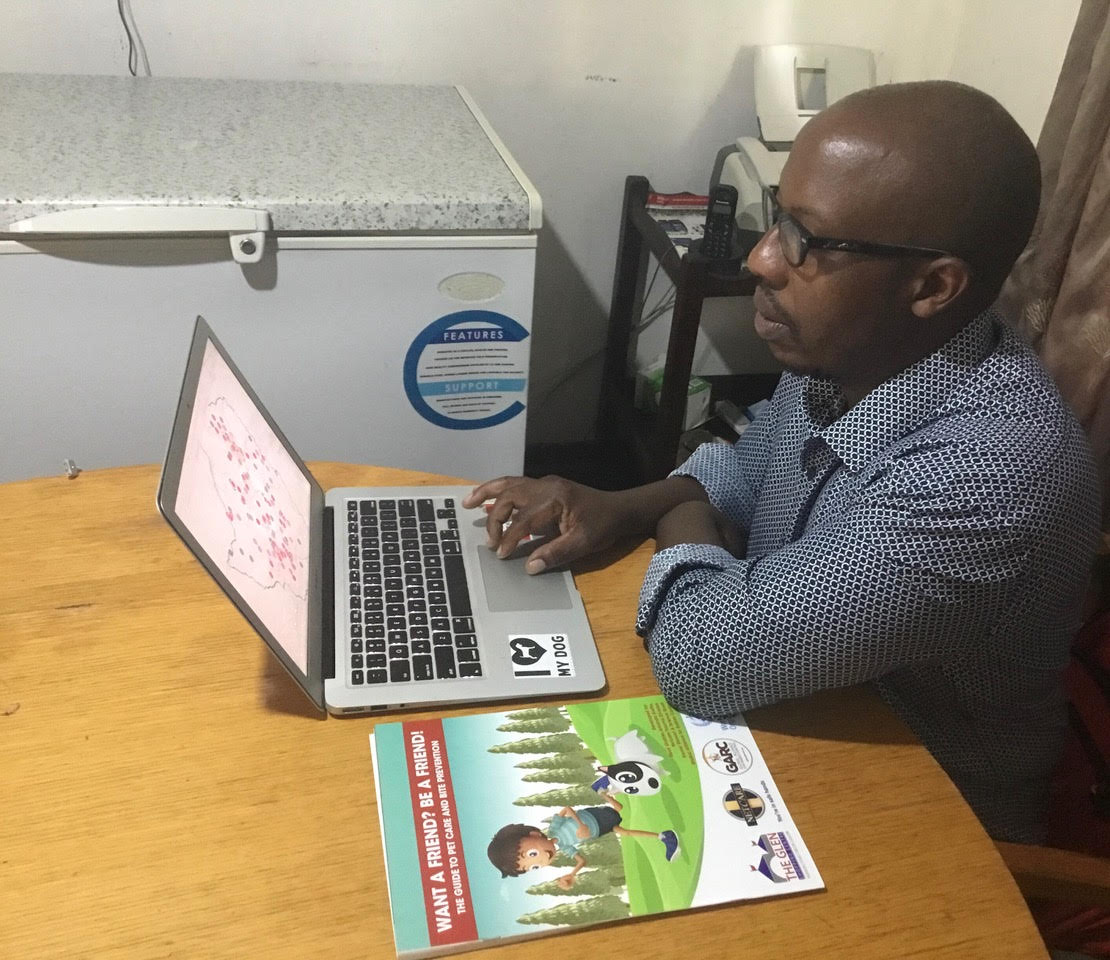Zimbabwe keeps rabies surveillance active during the COVID-19 pandemic
If working in Zimbabwe’s rabies laboratory for 18 years has taught me anything, it’s that the rabies surveillance data generated by the laboratory needs to be useful and not just filed away for record keeping. But for this to happen, the data needs to be analyzed and turned into informative maps and graphs that can be used for decision making.
In the past, I had to wait for the epidemiology division to assist with this process, but it often took too long. By the time I received the analyzed data, it was too late to use properly for any vaccination campaigns or planning. In 2019, I attended an online training with GARC on the use of the Rabies Case Surveillance (RCS) – a component of the Rabies Epidemiological Bulletin that enables users to record their laboratory data and have the system automatically generate maps and graphs. After my training, I started using the system to routinely analyze the national rabies data and use the outputs to report to my stakeholders.
“The Rabies Case Surveillance component has put the power back into my own hands! I can now generate my own up-to-date maps and graphs in real time, allowing me to report the most relevant data to my superiors without delay.” – Mr Lambert Fadzai Gwenhure, Laboratory Scientist and lead researcher, Zimbabwe’s rabies laboratory
In 2019, I took a few minutes at the end of each week to upload the diagnostic data. By the end of the year, I had uploaded diagnostic data for 399 samples. However, when COVID-19 started to affect Zimbabwe in 2020, I quickly realized that rabies would not go away and that the available resources would be re-directed if rabies did not remain prominent. As such, I took the initiative and kept urging the animal health professionals across the country to keep submitting samples so that they could be diagnosed and recorded. These efforts paid off and 131 samples were diagnosed and uploaded to the Rabies Epidemiological Bulletin in 2020. Although fewer samples were submitted, the ongoing submission of samples ensured that the national rabies control program maintained momentum despite the trying times faced in the country.
“Although we received fewer samples in 2020, I am happy to see that rabies surveillance has not stopped completely. If we forget about the rabies, we will lose momentum and more people will die of the preventable disease.” – Mr Lambert Fadzai Gwenhure, Laboratory Scientist and lead researcher, Zimbabwe’s rabies laboratory
With COVID-19 still prevalent across the country, I remain dedicated to the fight against rabies and vow to keep playing my part until rabies is a thing of the past in Zimbabwe and elsewhere.
Sustained rabies surveillance is key to reaching rabies elimination. Without surveillance, we cannot understand the disease and can’t determine the best ways to eliminate it. You can read more about the Rabies Case Surveillance and the Rabies Epidemiological Bulletin here.
Article contributed by: Mr Lambert Fadzai Gwenhure, Laboratory scientist and lead researcher, Zimbabwe’s rabies laboratory. https://www.linkedin.com/in/lambert-fadzai-gwenhure-b96469b5/
